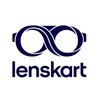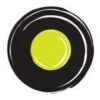Filter interviews by
First Solar Data Analyst Interview Questions and Answers
First Solar Data Analyst Interview Experiences
1 interview found
I applied via Approached by Company and was interviewed in Apr 2022. There were 4 interview rounds.

(3 Questions)
- Q1. Give examples of SQL joins
- Q2. Describe Normal Distribution and Standard deviation
- Ans.
Normal distribution is a bell-shaped curve that represents the probability distribution of a set of data. Standard deviation measures the spread of the data around the mean.
Normal distribution is symmetrical around the mean.
68% of the data falls within one standard deviation of the mean.
95% of the data falls within two standard deviations of the mean.
99.7% of the data falls within three standard deviations of the mean.
...
- Q3. How to do you detect outliers in the data and how do you treat them
- Ans.
Outliers can be detected using statistical methods and treated by either removing them or replacing them with a more appropriate value.
Use box plots, scatter plots, or histograms to visually identify outliers
Calculate the z-score or interquartile range (IQR) to identify outliers statistically
Remove outliers if they are due to data entry errors or measurement errors
Replace outliers with a more appropriate value if they ...
(3 Questions)
- Q1. How do you deal with multicollinearity in the data
- Ans.
Multicollinearity can be dealt with by using techniques like PCA, VIF, and dropping one of the correlated variables.
Perform Principal Component Analysis (PCA) to reduce the number of variables
Calculate Variance Inflation Factor (VIF) to identify highly correlated variables
Drop one of the correlated variables to avoid redundancy
Use regularization techniques like Ridge or Lasso regression
Collect more data to increase the...
- Q2. How do you design a dashboard
- Ans.
Designing a dashboard involves identifying key metrics, selecting appropriate visualizations, and organizing the layout.
Identify the purpose and audience of the dashboard
Select key metrics and KPIs to display
Choose appropriate visualizations for each metric
Organize the layout to be intuitive and easy to navigate
Consider color schemes and font choices for readability
Test and iterate on the design based on user feedback
- Q3. How do you deal with changes in data sources in case of a automated pipeline
- Ans.
Regularly monitor data sources and update pipeline accordingly.
Set up alerts to notify when changes occur in data sources
Regularly check data sources for changes
Update pipeline code to handle changes in data sources
Test pipeline thoroughly after making changes
Document changes made to pipeline for future reference
(3 Questions)
- Q1. How solar cells works
- Ans.
Solar cells convert sunlight into electricity through the photovoltaic effect.
Solar cells are made of semiconductor materials such as silicon.
When sunlight hits the solar cell, it excites electrons in the semiconductor material.
The excited electrons are then captured by an electric field within the cell, creating a flow of electricity.
Solar cells can be used to power homes, businesses, and even satellites in space.
- Q2. Working of PN junction
- Ans.
PN junction is a boundary between p-type and n-type semiconductor materials used in electronic devices.
PN junction is formed by doping one side of a semiconductor crystal with impurities that create an excess of electrons (n-type) or holes (p-type).
When the two sides are brought together, the excess electrons and holes diffuse across the junction and recombine, creating a depletion region with no mobile charge carriers...
- Q3. What is SPC, Spec limit and Control limit
- Ans.
SPC stands for Statistical Process Control. Spec limit is the upper and lower limit of a product's specification. Control limit is the upper and lower limit of a process's performance.
SPC is a method of monitoring and controlling a process to ensure it is within the desired range of performance.
Spec limit is the range of acceptable values for a product's characteristics, determined by customer requirements or industry ...
Interview Preparation Tips
Skills evaluated in this interview
Top trending discussions






Interview questions from similar companies

I applied via Campus Placement and was interviewed before Jun 2022. There were 3 interview rounds.

(1 Question)
- Q1. How well do you know excel?
- Ans.
I have extensive experience with Excel, utilizing its features for data analysis, visualization, and reporting.
Proficient in using formulas like VLOOKUP, HLOOKUP, and INDEX-MATCH for data retrieval.
Skilled in creating pivot tables to summarize and analyze large datasets.
Experienced in data visualization using charts and graphs to present findings effectively.
Familiar with conditional formatting to highlight key data po...
(2 Questions)
- Q1. Resume based questions
- Q2. General discussion about work

I appeared for an interview in Nov 2024, where I was asked the following questions.
- Q1. What SQL query can be used to find the maximum marks obtained by a student? Additionally, how would you estimate the total number of taxis in a city?
- Q2. What topics were discussed regarding your project during the second round of interviews?

Duration - 1hr, Mostly questions are from Excel and SQL ( But a little knowledge of R and Python is very useful) .For me, it's knowing the concepts and answering no codes were ask to write.
(1 Question)
- Q1. Basic 1-on-1 round with your manager/ or any senior from the company

I applied via Approached by Company and was interviewed in Apr 2024. There was 1 interview round.
(2 Questions)
- Q1. About previous experience situation based questions excel problem solving
- Q2. Tell me about yourself difference between data quality and data validity
Interview Preparation Tips

I applied via Referral and was interviewed in Aug 2023. There were 2 interview rounds.
SQL query optimisation
(1 Question)
- Q1. Regular discussion, about job role, why swiggy
Interview Preparation Tips

I applied via Company Website and was interviewed in Jul 2023. There were 4 interview rounds.

Number sires, clock, logic, arithmetic, geometry
Code test basic, ans the basic knowledge, write code
(5 Questions)
- Q1. What is python?
- Q2. What is python used for?
- Ans.
Python is a versatile programming language used for data analysis, web development, artificial intelligence, automation, and more.
Data analysis and visualization
Web development (Django, Flask)
Artificial intelligence and machine learning (TensorFlow, PyTorch)
Automation and scripting
Scientific computing (NumPy, SciPy)
- Q3. What type of language is python?
- Q4. What is oops in python?
- Ans.
Object-oriented programming (OOP) is a programming paradigm based on the concept of 'objects', which can contain data and code.
OOP allows for the organization of code into reusable components called classes.
Classes can have attributes (variables) and methods (functions) associated with them.
In Python, everything is an object, and classes can be defined using the 'class' keyword.
Encapsulation, inheritance, and polymorph...
- Q5. What is array in python?
- Ans.
An array in Python is a data structure that stores a collection of elements of the same type.
Arrays can store elements such as integers, floats, or strings.
Arrays are indexed starting from 0, with elements accessed using their index.
Example: arr = ['apple', 'banana', 'cherry']
Interview Preparation Tips
- Advanced Excel
- SQL Server
- Python
Skills evaluated in this interview

I applied via Referral and was interviewed in Mar 2023. There were 2 interview rounds.

(2 Questions)
- Q1. What’s your previous experience
- Ans.
I have 3 years of experience as a data analyst in the finance industry.
Worked with large datasets to extract meaningful insights
Performed data cleaning, transformation, and visualization
Created and maintained dashboards and reports for stakeholders
Conducted statistical analysis and built predictive models
Collaborated with cross-functional teams to identify business opportunities
- Q2. What’s your skills for the current role
- Ans.
I have strong skills in data analysis, including proficiency in statistical analysis, data visualization, and programming languages such as Python and SQL.
Proficient in statistical analysis techniques
Skilled in data visualization using tools like Tableau
Strong programming skills in Python and SQL
Experience with data cleaning and preprocessing
Ability to interpret and communicate insights from data
Familiarity with machin...
Interview Preparation Tips
- SQL
- Python

I applied via LinkedIn and was interviewed before Jul 2021. There were 2 interview rounds.

(1 Question)
- Q1. Knowledge about data summarisation.and some tools like Power bi and advance excel.
Interview Preparation Tips

Interview Preparation Tips
Experience: it was a basic test, CAT level questions and can be easily cleared
Tips: keep your cool, don't panic
Duration: 60 minutes
Total Questions: 60
College Name: IIT BOMBAY
First Solar Interview FAQs
Tell us how to improve this page.
First Solar Interviews By Designations
- First Solar Maintenance Technician Interview Questions
- First Solar Manufacturing Technician Interview Questions
- First Solar Manufacturing Supervisor Interview Questions
- First Solar Manager Interview Questions
- First Solar Data Analyst Interview Questions
- First Solar Software Developer Interview Questions
- First Solar Team Leader (Technical) Interview Questions
- First Solar Data Science Intern Interview Questions
- Show more
Interview Questions for Popular Designations
Data Analyst Interview Questions from Similar Companies
|
Maintenance Technician
31
salaries
| ₹2.2 L/yr - ₹4.5 L/yr |
|
Manufacturing Engineer
29
salaries
| ₹2.4 L/yr - ₹10.5 L/yr |
|
Manufacturing Technician
12
salaries
| ₹2.3 L/yr - ₹4.5 L/yr |
|
Manufacturing Engineering Technician
9
salaries
| ₹2 L/yr - ₹4 L/yr |
|
Technical Supervisor
8
salaries
| ₹4.5 L/yr - ₹9.3 L/yr |

Udaan

BigBasket

Swiggy

Oyo Rooms
- Home >
- Interviews >
- First Solar Interview Questions












